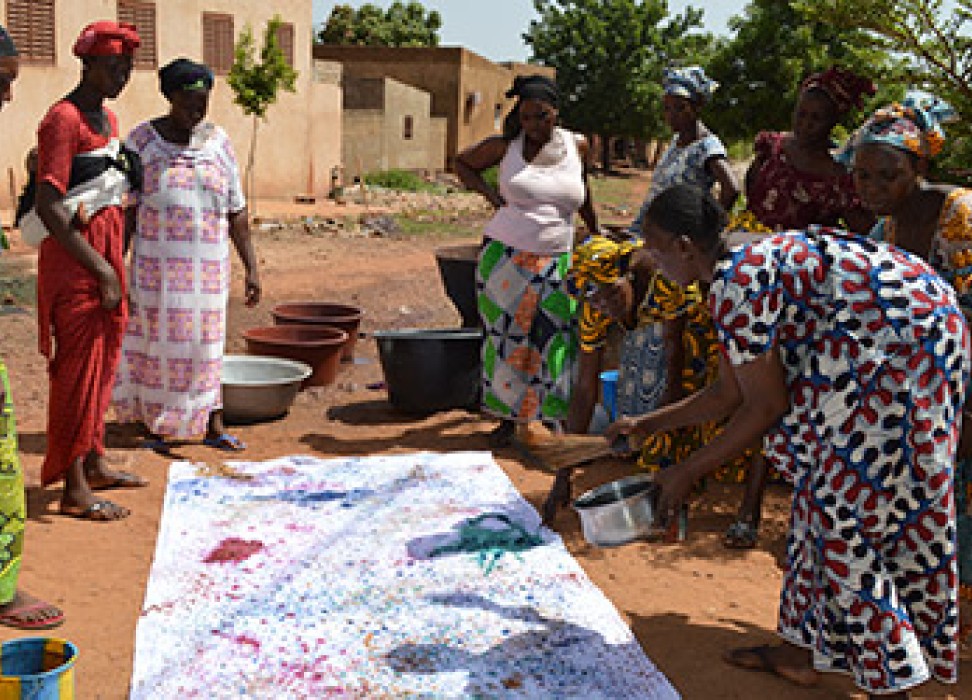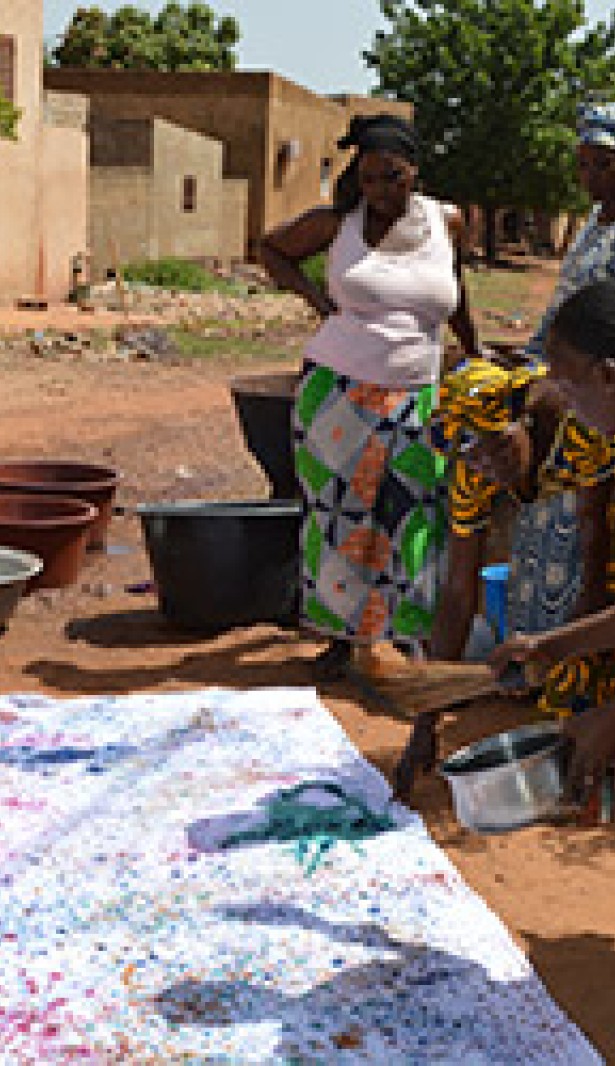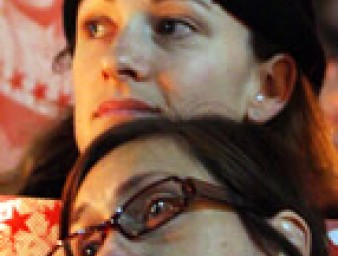Mali: From the right to live in peace to the right to a livelihood
14 November 2016

On a bright, cloudless day, in the court yard of a school on the outskirts of Bamako, in Mali, groups of women turn dye and white cloth into brightly coloured hopes for the future.
“This project has brought me a lot, because, thanks to God, I can do my own work,” said Zenaib Walet Amadou. “We must have success, be it here or outside Mali.”
For Amadou standing in the hot, bright sunshine of Malian summer’s day, dying cloth is not merely about making money to support her family, it was about regaining her dignity.
In 2014, she and her five children fled her town of Bourem in the Gao region of northern Mali when fighting broke out between rival Tuareg coalition forces. She eventually found her way to Bamako, but work was hard to come by and she soon found that she was reduced to begging and hand outs in order to support her family.
Then came an opportunity to learn dye making and other small business skills, through the NGO Association Femmes Battues, and she jumped at it. The project has helped to retrain her and 106 other internally displaced women from escaping the violence of the conflict taking place in northern Mali.
The income-generating project is funded by the Human Rights and Protection Division (HRPD) of the UN Multidimensional Integrated Stabilization Mission in Mali (MINUSMA). The division’s director, Guillaume Ngefa, said that supporting such a project fits perfectly with the division’s work in the country.
“Our experience in working with victims is that documenting serious violations of human rights is not enough,” he said. “You investigate, you report and then you release the report, but what could be the next step?”
Since 2012, Mali has been embroiled in conflicts in the North, involving anti-government military coalitions and jihadist forces. This fighting has led to numerous attacks on civilian, military and government personnel and has caused huge instability, including the displacement of thousands from their homes.
MINUSMA HRPD has documented these human rights violations, reporting on a systemic and endemic culture of impunity. The team has documented abuses by all parties to the conflict including summary and extrajudicial executions, arbitrary and illegal arrests and detention, torture, sexual, and gender based violence, and the looting and destruction of property.
But, Ngefa said it wasn’t enough to just report on what was happening to people.
“These people were victims of serious human rights violations and at the same time exposed to some situations that are not good for their dignity,” he said. “So we decided to fund an NGO to work with women in particular to create activities that can generate income for them.”
This project has provided more than 100 women displaced from fighting in the North of the country with new opportunities and professions. In addition to learning how to dye cloth, some women have also learned how to make dried fruit snacks and juices to sell in markets.
“We have seen an improvement in their living conditions,” said Fataumata Kane Diallo, the project trainer with Associations Femmes Battues.
Adama Maiga also escaped from Gao in the North, with just her children and the clothes on her back. Since finding work with the project, she said that she can provide for her family once again.
“It is important to work because we can earn money, at least what we need by the sweat of our brow,” she said. “We can eat and support our children. They can go to school, so it is a lot.”
For Ngefa, by supporting projects like this, victims of violence learn that human rights can also provide tangible solutions.
“We gave hope to the victims so that they know they are not forgotten,” he said.
14 November 2016

